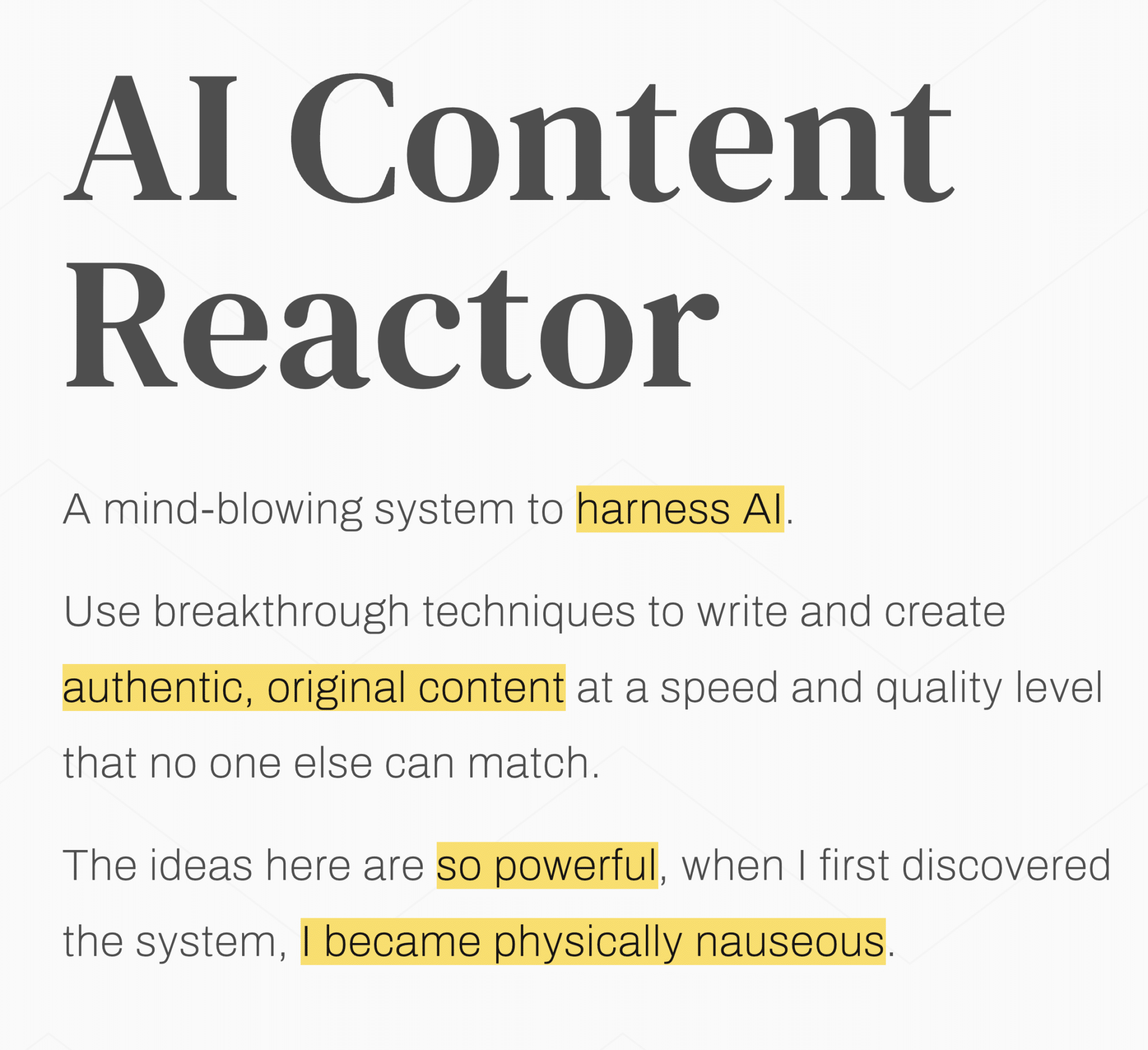In our crowded digital world, being seen is just the start. What really matters is whether your audience feels like you “get them.” Why? Because one of the most powerful tools in marketing is being able to create a sense of unity, of shared identity in influencing behavior.
We see it in the idea of “keeping up with the Joneses” and in the way luxury brands market their products. In this article, we’ll look at what unity is, share a few examples in the wild, and provide actionable takeaways of how you can put unity to work for your company, brand, and products.
Let’s dig in.
Table of contents
- What is unity in relation to marketing?
- Why does unity matter in marketing?
- Where AI and emotional intelligence collide: the future of unity in marketing.
- What does neuroscience reveal about belonging?
- How does shared identity trigger consumer behavior?
- Three examples that show unity in real campaigns: Spotify, TikTok, and Apple.
- Potential missteps: American Eagle is a huge example of how a brand can go right… or wrong.
- What is the real-world impact of the neuroscience?
- What do marketers need to remember about unity in marketing?
- Turning Unity into Conversions
What is unity in relation to marketing?
Unity goes deeper than shared interests. As I mentioned above, it’s about shared identity, creating a sense of community – of belonging. Humanity as a whole has a need to connect with like-minded individuals. Hence, the idiom “birds of a feather flock together,” which basically means that similar people tend to associate with each other.
This principle draws from social identity theory (Tajfel & Turner, 1986), which suggests people find self-worth and decision-making cues from the groups they associate with.
In marketing, this can translate to:
- Messaging that echoes your audience’s values
- Visuals that feel familiar and inclusive
- A brand voice that says, “you’re one of us”
- Encouraging audience participation and belonging
Brands like Apple, Nike, and Patagonia excel at this. They don’t just sell products; they sell who you are when you use them.
Apple is an example of uniting an audience behind a concept.
Let’s look at Apple as an example. Apple’s slogan from 1997 to 2002 was “Think different.” Their ads at the time celebrated the ones who pushed the human race forward by changing the world.
They’re not just selling tech. They’re offering a membership to a specific lifestyle. A certain kind of “us.”
While “think different” is no longer its slogan, the company continues to position its target audience and users as visionaries and rule-breakers. And the brand continues to attract those who see themselves as creative, discerning, and a little ahead of the curve.
Why does unity matter in marketing?
Let’s cut to it: when people feel like a brand “gets” them, they stick around. They lean in. This idea is backed by decades of social psychology. This idea, known as social identification, drives our decisions by reinforcing our sense of belonging. Tajfel and Turner laid the groundwork in the 1980s, showing how people tie their self-worth to the groups they belong to. Whether it’s aligning with a lifestyle, supporting a cause, or joining a brand-led movement, shared identity can turn passive observers into loyal advocates.
Present studies show how shared social identity leads to coordinated behavior. When people feel united by a purpose or belief, their actions align. You can create a similar effect in digital communities if you know what your audience values.
But you don’t need a billion-dollar budget to make this work. A niche skincare brand highlighting customers with real skin stories can build stronger loyalty than polished perfection ever could.
Where AI and emotional intelligence collide: the future of unity in marketing.
As AI and machine learning advance, the capacity to recognize, interpret, and adapt to emotional signals is accelerating. This evolution offers brands the opportunity to scale human-like interactions with unprecedented precision.
Imagine an AI that doesn’t just serve ads, but knows when and how to offer value based on a customer’s emotional state, behavioral pattern, or social identity. Used well, this lets marketers show up in exactly the right moment with exactly the right message.
And it’s not too far away. We asked ChatGPT 4o via voice chat if it could recognize tonal changes in a voice to tell if someone is sad, crying, or upbeat. It’s reply:
“Yeah, I can definitely pick up on some tonal differences. For example, I can usually tell if someone is sounding a bit more upbeat, or if their voice is more subdued or maybe even tearful. It’s not perfect, of course, but I can get a general idea of the emotional tone from how someone is speaking.”
This is several steps above sentiment analysis, but this power comes with responsibility. The future of unity-based marketing will require a careful balance between personalization and privacy, between data-driven empathy and ethical transparency.
AI can help brands:
- Create dynamic segments based on behavioral signals tied to group identity
- Deliver hyper-personalized experiences that align with community values
- Adapt visual and messaging cues in real-time to increase emotional resonance
But let’s be real. It’s not magic, right? You still have to lead with empathy, not data. It’s important to remember that, while it sounds empathetic, AI doesn’t really have the ability to empathize and can (as ChatGPT states) get it wrong. There’s a line between personalized and creepy, and if you cross it, you lose trust. AI should enhance human connection, not replace it.
What does neuroscience reveal about belonging?
Here’s where science backs all this up. Neuroscientific studies, like those examining religious mass gatherings like the Magh Mela (Khan et al., 2022), reveal that shared social experiences affect brain activity. Regions like the medial prefrontal cortex (self-reflection) and ventral striatum (reward) light up when people experience unity.
The brain rewards us when we feel like we belong. This neurochemical boost leads to real effects:
- People are quicker to trust
- They make faster decisions
- They engage longer and more deeply
Unity literally rewires us to prefer and prioritize shared group experiences. It isn’t just emotional; it’s also a chemical reward.
How does shared identity trigger consumer behavior?
Unity doesn’t just make people feel good; it drives action. When individuals identify with a group, brand, or cause, they don’t just emotionally connect; they behave differently. This sense of shared identity activates powerful behavioral triggers, rooted in social psychology and neuroscience, that lead to measurable outcomes:
Act
Consumers actively buy products and services that mirror their group’s values, beliefs, or lifestyle.
Example: Members of sustainability-focused communities choose eco-conscious brands not only because they believe in the cause, but because the purchase reinforces their self-image and group belonging.
This is supported by self-categorization theory (Turner et al., 1987), which suggests people adopt behaviors that align with their in-group.
React
People will defend or promote brands they feel a sense of identity with.
Whether it’s reposting content, leaving glowing reviews, or pushing back on criticism, this emotional bond triggers advocacy. It becomes less about the product and more about what it represents to the individual and the group they identify with.
Follow
Individuals adopt the behaviors, preferences, and norms of their group.
Social proof comes into play here. When people see others in their community engaging with a brand, they’re more likely to follow suit. This mimics the psychological need for belonging and validation, reinforcing both loyalty and conversion.
In short, unity doesn’t just influence, it compels. When consumers see themselves reflected in a brand, its message, audience, or mission, they’re far more likely to engage, advocate, and convert. Unity becomes more than emotional; it becomes behavioral. People don’t just feel connected: they act on that connection.
Three examples that show unity in real campaigns: Spotify, TikTok, and Apple.
Want to build a brand people don’t just buy from, but believe in? Tap into shared identity. When your audience sees themselves in your brand, they’re more likely to convert, because they’re more likely to belong. And belonging? That’s behavior that lasts.
Spotify Wrapped: Spotify taps into personal identity and group belonging. By turning individual listening data into shareable stories, users are posting personality, not just playlists. It says, “This is me,” while reinforcing group affiliation through genres, trends, and artist fandoms. The act of sharing becomes social currency.
TikTok Challenges: These viral campaigns are more than fun; they’re digital rituals. When users participate in a trending dance, lip-sync, or meme challenge, they’re aligning with a collective experience. The behavior isn’t just for content; it signals inclusion. It’s a modern-day mass gathering, forming mini-tribes through repetition, recognition, and reward.
Apple Launch Events: Apple sells products and nurtures a movement. The fanfare around launches is fueled by shared anticipation, values (innovation, design, lifestyle), and the identity of being an “Apple person.” Fans line up or tune in because they feel part of something larger than themselves. The behavior here isn’t passive; it’s ritualized and loyal.
Potential missteps: American Eagle is a huge example of how a brand can go right… or wrong.
And then there are the missteps. Remember Pepsi’s attempt to connect with protest culture? It flopped because it felt forced and disconnected from real community values. Authenticity matters.
A more current – and volatile – example is American Eagle’s “Sydney Sweeney Has Great Jeans” campaign. According to the brand, the intent was to highlight its denim heritage and position Sweeney, a high-profile, Gen Z-aligned figure, as the embodiment of confidence and style.
The campaign generated over 40 billion impressions and over 790,000 new customers in just the first six weeks. It also faced backlash, with some flagging the ad as a push for eugenics. The brand’s response was straightforward: It’s about jeans, and it’s always been about jeans.
As we marketers pore over cases like this with interest, we can see that the campaign drove real results. Stocks jumped 25-38%. The CEO reported record-breaking new customer acquisition and brand awareness. While it was their most expensive campaign, the CMO said it was “worth every dollar.”
Did the campaign make consumers feel understood?
This campaign illustrates both sides of brand identity.
When it works:
- Celebrity alignment & cultural relevance: Featuring Sydney Sweeney, who resonates with Gen Z culture, made the brand feel current and relatable.
- Boldness over neutrality: The campaign’s audacious tone sparked conversation and positioned the brand as confident and unapologetic.
- Real results matter: The rapid sellouts, rising stock, and heightened awareness show that many consumers responded with enthusiasm, feeling seen and energized by the brand momentum.
When it misses:
- Interpretation vs. intention: Even if a campaign is meant to be playful, it can be interpreted as insensitive, especially when the phrasing touches on identity or genetics.
- Risk of alienation: While many embraced the campaign, some audiences felt excluded or offended, highlighting how unity can backfire if a brand is perceived as tone-deaf.
The takeaway:
American Eagle’s campaign shows the power of shared identity in marketing, but also the tightrope brands walk:
- When done right, a bold, value-aligned message can ignite community, drive sales, and reposition a brand.
- When taken the wrong way, the same message can alienate and spark backlash.
They understood their core, Gen Z denim lovers who appreciate boldness, and leaned into that narrative. The result? A dramatic spike in engagement and buzz, even amid controversy.
What is the real-world impact of the neuroscience?
Unity goes far deeper than groupthink or fleeting trends; it physically reshapes the brain. Neuroscientific studies show that when we feel a deep sense of belonging or shared identity, our brains release oxytocin, dopamine, and other neurochemicals tied to trust, empathy, and reward. This neurological bonding explains why we remain loyal to certain brands, causes, or communities long after the initial trigger.
In high-emotion or spiritually charged environments (like mass gatherings, fan events, or social movements), these effects are even more pronounced. The brain literally encodes the shared experience as a defining moment.
For marketers, the takeaway is clear: campaigns that tap into shared values, purpose, and emotional storytelling do more than prompt a sale. They build memory, meaning, and long-term behavioral alignment. This is how brands go from being a product to being part of someone’s identity.
What do marketers need to remember about unity in marketing?
If your brand doesn’t reflect your audience, it won’t connect. Period.
Here are a few things to keep in mind:
- Know what your audience values and why
- Show up where they gather
- Speak in a way that signals, “we understand you”
Unity is about consistent, honest reflection, not checking boxes.
How to use unity in your marketing campaigns:
- Visual Campaigns: Use diverse, relatable imagery that reflects the shared identity of your audience.
- Video and Storytelling: Create narratives that echo your audience’s values. Use “we” and “us” language to foster inclusion.
- TikTok Strategies: Launch branded hashtag challenges. Encourage user participation with trends that resonate with group values.
Step-by-step strategy for marketers:
- Define your audience’s shared identity.
- Create a message that mirrors their values.
- Choose platforms where they naturally gather.
- Use visual and verbal cues to reinforce unity.
- Encourage participation and co-creation.
- Measure both emotional engagement and conversion metrics.
Scaling unity with AI technology:
AI allows marketers to:
- Segment audiences by identity indicators
- Deliver personalized content at scale
- Predict engagement based on group behaviors
AI doesn’t replace human connection, but it does enhance your ability to create it, quickly and accurately.
Turning Unity into Conversions
Unity is no longer just a theoretical concept. It’s a measurable force rooted in psychological processes, group norms, and behavioral science. Studies across various participant ages and demographics consistently show that when people perceive a shared identity, they’re more likely to trust, engage, and convert.
Brands that understand this don’t just sell, they connect. They build communities. They create movements.
Ready to turn your traffic into a tribe? Leverage unity-driven messaging, purposeful design, and inclusive brand narratives to transform your website into a lead-generating, conversion-optimized machine.
When your audience sees themselves reflected in your brand, when they feel part of something larger, they’re not just customers. They become advocates, loyalists, and lifelong supporters.
Let them belong, and they’ll follow you anywhere.



































